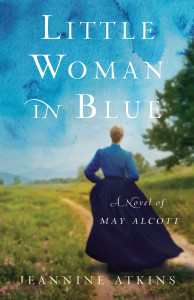The thirteen stories in The Water Museum will make you laugh, cry, ponder, wonder, and exclaim. Urrea’s Pulitzer Prize finalist nonfiction work, The Devil’s Highway, and his historical sagas including The Hummingbird’s Daughter blend the poetic voice of his Mexican-American culture with his uncanny ear for dialogue. For that reason, I beg you, DON’T READ THIS BOOK! I read it and loved it, but now that I’ve heard Urrea speak and listened to some of his award-winning audios, I plan to “read” his other works via audio.Thus, my advice is that you listen to The Water Museum to hear Urrea embody the words.
The stories in this collection reflect the changing landscape of the American west and its immigrant communities. “Mountains Without Numbers,” the first story, sparely shows a disintegrating town in Idaho. “Is a town dead when the old men die, or when the children leave?” wonders a woman as she considers the past and Urrea skillfully ties the landscape to the tale.
The immediacy of the dialogue in “The National City Reparation Society” then immerses the reader in Junior’s world where he doesn’t feel comfortable at his white college or in the Mexican-American immigrant community where he grew up. Then the very short story, “Carnations” captures a universal world of love and grief that has no borders. Themes of class and cultural boundaries bounced about like a ping pong ball in my brain as the stories captivated me. That almost prepared me for the stomach-lurching impact of “Amapola” whose white, teenaged narrator falls in love with a beautiful, privileged Mexican girl. Just thinking about the last paragraphs of that tale have me reaching for something to coat my queasy stomach. It’s easy to see why the story won the Edgar Award.
The next entries returned me to themes of truth, kindness, loyalty, and grief and their pace allowed me to ponder. Then “The Sous Chefs of Iogua” grabbed me with its delightfully wry images of immigrants whose multiple Mexican restaurants weren’t attracting locals so they begin offering “espageti,” microwaved Hungry Man Italian meals, and turkey dinners covered with the funniest mashed potatoes ever appearing in print. This underlying humor allows Urrea to convey the difficulty of the relationships between long-time Anglo residents and Mexican immigrants in towns too small for them to ignore one another. This story alone dictates the necessity of listening to Urrea’s compelling voice.
“Welcome to the Water Museum” magically conjures a world in which students visit the titular water museum to see what the world was like when water flowed. As children suck on sour candies to stimulate the saliva in their mouths and thus to stave off their thirst, readers will find themselves preoccupied with thoughts of the future.
In the last story, “Bid Farewell to Her Many Horses,” a white man’s marriage to an Oglala Sioux woman over the objections of her family leads to an emotional climax only someone with Urrea’s chops can deliver with such impact and truth. Ending the book with such a powerful expression of love forces the reader to reexamine the previous stories and to contemplate Urrea's message.
Summing it Up: Do not read this book; listen to Luis Alberto Urrea tell you these stories in his own often emotional, sometimes whimsical, and always powerful voice. His recording of The Water Museum just won an Earphone Award given by AudioFile to “exceptional titles that excel in narrative voice and style, characterizations, suitability to audio, and enhancement of the text.” That along with Urrea’s exceptional use of language, his love of and respect for his characters, and his ability to make a reader/listener enter into another world make this a “must listen.”
(In case you were wondering, Urrea is pronounced “oo-RAY-uh.”)
Rating: 5 stars
Category: Fiction, Five Stars, Gourmet, Road Food, Tapas, Book Club
Publication date: April 7, 2015
Author Website: http://www.luisurrea.com/
Listen to an Excerpt: http://www.audiobooks.com/book/stream/232064
Interview with the Author: Watch this interview with Bill Moyers to appreciate Luis Alberto Urrea: https://www.youtube.com/watch?v=d4lzdVWsiI4
What Others are Saying:
National Public Radio: http://www.npr.org/2015/04/08/397824208/love-violence-and-lou-reed-on-display-in-the-water-museum
Publishers Weekly: http://www.publishersweekly.com/978-0-316-33437-2




